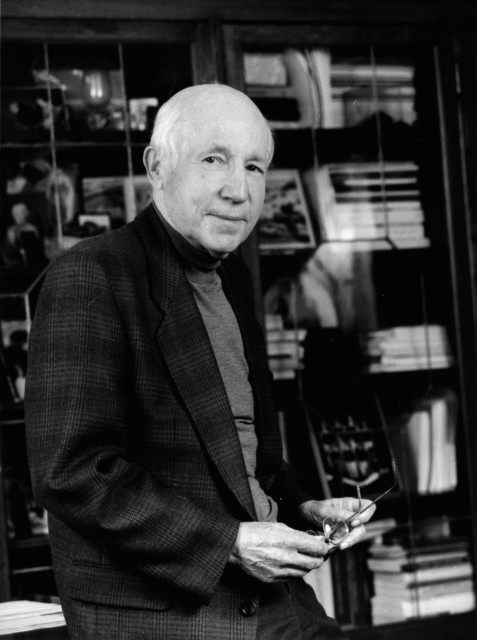Melvin Calvin
1911-1997

Calvin received the 1961 Nobel Prize in Chemistry for elucidating the path by which CO2 is converted to carbohydrates in photosynthesis. Green algae, first grown in a normal atmosphere, were fed short bursts of radioactive 14CO2 and then killed after various times to interrupt the photosynthetic process. The time required for radioactivity to be incorporated in various metabolic intermediates allowed the sequence of chemical events, known as the carbon or Calvin cycle, to be established.
Calvin's scientific interests were eclectic and included organic geochemistry, chemical evolution, chemical carcinogenesis, brain chemistry and the analysis of moon rocks. Early in his career (1941) he published, with Gerald E. K. Branch, an influential book on "The Theory of Organic Chemistry".
Born in St. Paul (MN), Calvin took his undergraduate degree here in the Michigan upper peninsula, at the Michigan College of Mining and Technology. After the Ph.D. (U. of Minnesota) and two years with Michael Polanyi in England, he joined the University of California (Berkeley) in 1937, and remained there throughout his career. Calvin served as ACS president in 1971 and, besides the Nobel, his many honors included the Priestley Medal (1978) and the National Medal of Science (1989).
Sponsor: Ramon F. Rolf
Gary Steinman, M.D.
Location in chemistry building:
First Floor; West Wing South Wall; Sequence 7
Source:
Professor Calvin